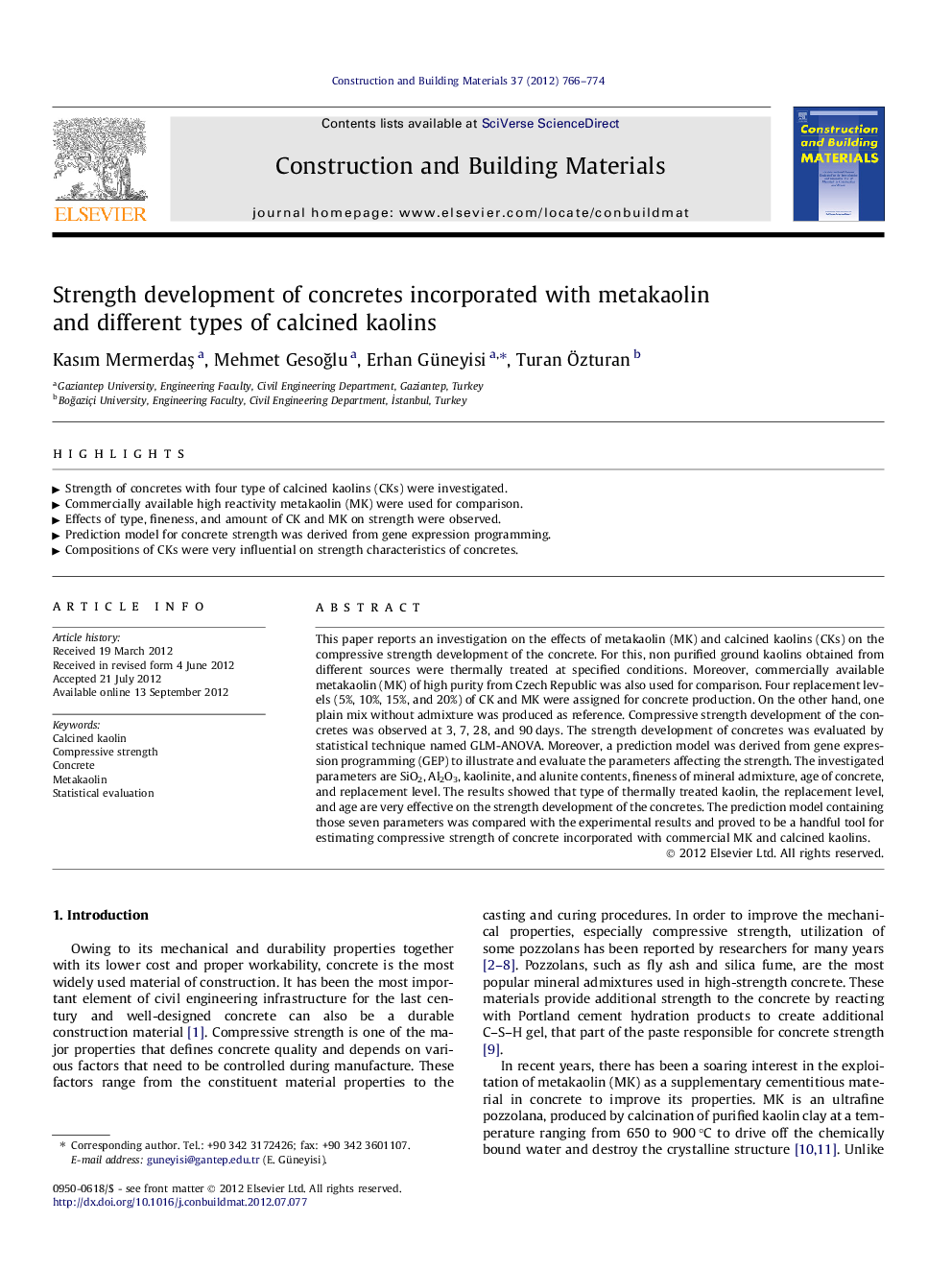| Article ID | Journal | Published Year | Pages | File Type |
|---|---|---|---|---|
| 258778 | Construction and Building Materials | 2012 | 9 Pages |
This paper reports an investigation on the effects of metakaolin (MK) and calcined kaolins (CKs) on the compressive strength development of the concrete. For this, non purified ground kaolins obtained from different sources were thermally treated at specified conditions. Moreover, commercially available metakaolin (MK) of high purity from Czech Republic was also used for comparison. Four replacement levels (5%, 10%, 15%, and 20%) of CK and MK were assigned for concrete production. On the other hand, one plain mix without admixture was produced as reference. Compressive strength development of the concretes was observed at 3, 7, 28, and 90 days. The strength development of concretes was evaluated by statistical technique named GLM-ANOVA. Moreover, a prediction model was derived from gene expression programming (GEP) to illustrate and evaluate the parameters affecting the strength. The investigated parameters are SiO2, Al2O3, kaolinite, and alunite contents, fineness of mineral admixture, age of concrete, and replacement level. The results showed that type of thermally treated kaolin, the replacement level, and age are very effective on the strength development of the concretes. The prediction model containing those seven parameters was compared with the experimental results and proved to be a handful tool for estimating compressive strength of concrete incorporated with commercial MK and calcined kaolins.
► Strength of concretes with four type of calcined kaolins (CKs) were investigated. ► Commercially available high reactivity metakaolin (MK) were used for comparison. ► Effects of type, fineness, and amount of CK and MK on strength were observed. ► Prediction model for concrete strength was derived from gene expression programming. ► Compositions of CKs were very influential on strength characteristics of concretes.
